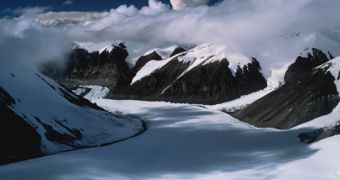While most studies linking environmental pollution to shrinking glaciers focus on the Antarctica and the Arctic, the fact remains that the Tibetan Plateau is also undergoing significant changes as a result of human society's heavily industrialized ways.
Thus, Yao Tandong, the current director of the Chinese Academy of Sciences' Institute of Tibetan Plateau Research warns that, as far as he and his fellow researchers can tell, the glaciers in this part of the world are currently shrinking at alarming rates.
It is these specialists' belief that, all things considered, the thinning experienced by Tibet's glaciers can be attributed to the massive amounts of black carbon pollution produced by countries in South Asia. Times of India reports that, according to Yao Tandong, a significant amount of the black carbon pollution produced in South Asia throughout the course of a year gets to impact on the glaciers in the Tibetan plateau because of the spring and summer Indian monsoons.
“The accumulation of black carbon on the plateau will accelerate the shrinking of glaciers, bringing with it persistent organic pollutants that will be deposited in the soil,” Yao Tandong told members of the press.
Besides their responding to environmental pollution in South Asia, these glaciers are bound to be affected by the predicted increase in global average temperatures.
“Systematic differences in glacier status are apparent from region to region, with the most pronounced shrinkage in the Himalayas, the south eastern part of the region. Some of the glaciers there are very likely to disappear by 2030.”
“The shrinkage generally decreases from the Himalayas to the continental interior and is smallest in the western part. Some glaciers there are even growing,” Yao Tandong went on to argue.
Should the glaciers in this part of the world continue to melt, odds are that both wildlife and human communities will come face to face with potentially hazardous changes in local landscapes.

 14 DAY TRIAL //
14 DAY TRIAL //